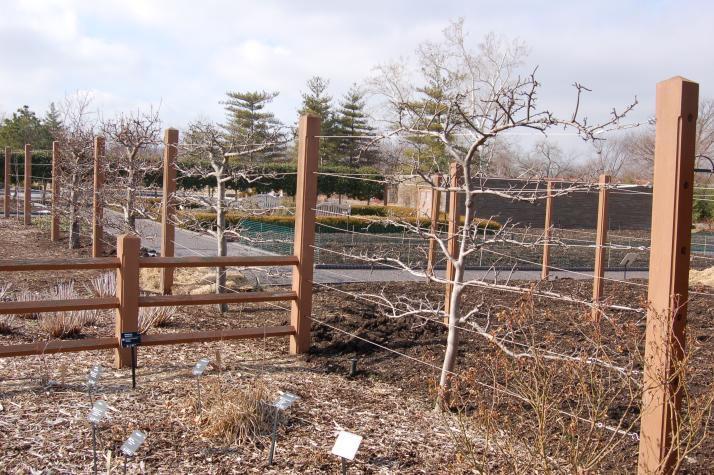BLUE SPRINGS, Mo. – Espalier (pronounced “is-PAL-yer”) is a centuries-old art of growing plants in two dimensions, or on a single plane. Most people have areas in their gardens where an espaliered plant would fit, either as a way to spruce up a barren wall or as a screen, said a University of Missouri Extension horticulture specialist.
Espaliered ornamental and fruiting plants easily become focal points in the landscape, said Marlin Bates. Nearly any plant can be espaliered, though some plants lend themselves to this practice better than others,
Shrubs and trees with flexible branches, such as forsythia, viburnum, yew, apple and pear, are the easiest to espalier. Gardeners can create a variety of designs by continually managing the young shoots.
For most designs, use a trellising system of rot-resistant wood or other non-degradable material. If you plan to espalier plants against a wall, be sure to leave at least six inches between the wall and trellis for air circulation. Consider including hinges on the bottom of the trellis so you can access the wall to paint or make repairs.
To train the plant, cut the main leader(s) just above the buds where you want the first set of branches. During the first year, allow the plant to develop a number of long shoots. At the end of the growing season, select the shoots to train outward and upward, tie them in place and remove all other shoots. On these new branches, identify where you will want them to branch again and prune above the closest bud. Again, allow growth from this point to continue until the end of the next season. Continue this process until the pattern/trellis is filled.
In addition to the pruning for training, annual trimming is necessary to maintain the shape of the plant.
“With the varying degrees of complexity in espalier designs, there’s sure to be one to appeal to every gardener,” Bates said. “Whether you want to enjoy the look of these plants without spending hours maintaining them or if you are interested in learning the art to the fullest degree, you can practice espalier.”
An MU Extension guide, “Pruning Ornamental Shrubs” (G6870), is available online at extension.missouri.edu/publications/g6870.
Writer: Rebecca Gants
